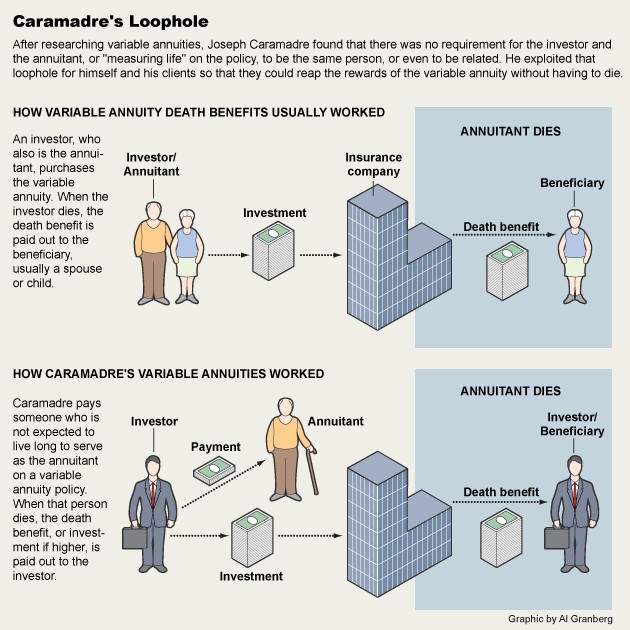The Best Variable Annuities
Post on: 16 Март, 2015 No Comment

Sales of variable annuities in 2008 were down 15.1% from their peak in 2007, according to the Association for Insured Retirement Solutions, a variable annuity trade association. Total sales declined to $154.8 billion from $182.2 billion the year earlier.
Despite the decline—most pronounced with the year-over-year fourth quarter decrease in sales of 30.3%—clearly millions of investors still consider variable annuities an important part of retirement planning.
The biggest drawback to variable annuities is the additional costs associated with them as compared to straight mutual fund investing. The biggest benefit to them is the guaranteed withdrawal benefits which have proved their worth during this ongoing market decline.
As part of the annual update of TheStreet.com Ratings’ Consumer Guide to Variable Annuities. we reviewed more than 1,300 annuities listed in the Morningstar Principia Variable Annuities Advanced product to find those meeting specific criteria: no front-end load, no surrender charges, an insurance company with TheStreet.com Financial Strength Rating of B- or higher, a wide selection of mutual fund choices, above-average returns, and below-average internal expenses.
A partial list of the ten variable annuities published in the Consumer Guide with the best combination of these features are listed below. Needless to say, finding above-average returns in 2008 results presented a challenge. So rather than above-average returns, we settled for contracts that lost less than the overall market. For example, the “Retirement & Supplemental Retirement Annuity” offered by Teachers Insurance & Annuity Association had a one-year total return of negative 21.66% compared to a decline in the S&P 500 of 37% in 2008. “Signature Immediate VA I” offered by John Hancock Variable Life Insurance, a unit of Manulife Financial Corp. (Stock Quote: MFC ), had a one-year total return of negative 25.01%.
It is important to remember that the criteria used to compile this list may not necessarily be one size fits all. These are broad criteria that are important to consider and help whittle down choices to a manageable list. These variable annuities are sold through independent financial advisors with whom investors should consult before making a decision.
We also recognized that the low-cost variable annuities typically don’t have guaranteed withdrawal benefits which can be so valuable. So criteria for surrender charges and internal expenses were relaxed since, in addition to a fee, the trade off for a guaranteed withdrawal benefit is a surrender charge that generally applies for five to ten years.
Again, a partial list of the ten variable annuities published in the Consumer Guide is included here.
Ten Steps in Evaluating a Variable Annuity Policy
(an excerpt from the TheStreet.com Ratings’ Consumer Guide to Variable Annuities)
Once you decide that investing in variable annuities is the correct choice for you, you should follow these steps before buying:
1. Shop around. There are so many variable annuity products on the market today that it pays to take the time you need to find the one that best suits your needs.
2. Avoid all variable annuities that charge a front-end load. The up-front cost just cannot be justified.
3. Favor annuities with no or low back-end loads (surrender charges) unless guaranteed withdrawal benefits are one of your requirements. Most variable annuities with guaranteed withdrawal benefits charge a surrender fee for a certain number of years.
4. Focus first on those insurance companies with a TheStreet.com Financial Strength Rating of A (excellent) or B (good). Since the variable annuity will be maintained as a “separate account”, you may also decide to consider companies with a C (fair) rating, although you will want to periodically monitor them more closely.
5. Avoid variable annuities that do not offer a choice of at least seven mutual fund subaccounts – an aggressive growth fund; a growth fund or S&P 500 index fund; a growth and income fund or balanced fund; a small cap fund; an international or global fund; a bond fund; and a money market fund.
6. Compare the performance of the funds available through the variable annuity to the averages for those types of funds. You should look for variable annuities with funds that have achieved at least average performance for the last one-year, three-year, and five-year time horizons. With returns for 2008 being abnormal, it is a good idea to look at long-term results to get a sense of how well the subaccounts have performed over time.
7. Compare the variable annuities’ total expense costs. (Total expense = mutual fund annual expense + insurance expense). Look for variable annuities that have total expenses at or below the industry average of 2.15%.
8. Make sure the variable annuity allows you to switch between the mutual fund subaccounts by telephone, preferably at no additional cost.
9. Favor a variable annuity policy that gives you the right to withdraw up to 10% of your money annually with no surrender charge or other penalty. You may never take advantage of this feature, but it is good to have in case of emergency.
10. Look for variable annuities offering a periodic step-up of the insurance amount as the value of the mutual fund subaccount grows through the years.
TheStreet.com Ratings issues financial strength ratings on each of the nation’s 4,000 life, health, annuity, and property/casualty insurers are available on the Insurers & HMOs Screener. In addition, the Financial Strength Ratings for 8,600 banks and savings and loans are available at no charge on the Banks & Thrifts Screener .














